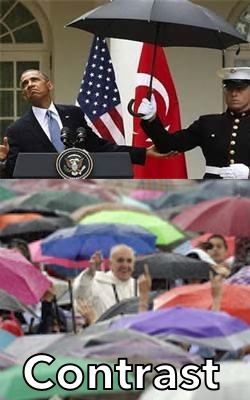The state of commentary on the works of Shakespeare shares a lot with the sad state of affairs concerning scripture scholarship. In both cases instead of exegesis and drawing out of the text, we get eisegesis and a reading into the text. interpretations that say more about the commentator than the text. Just like “the Real Jesus” there is also “the Real Shakespeare” where Shakespeare wasn’t really Shakespeare and didn’t really write the works attributed to him.
The state of so much Shakespeare scholarship reminds me of G.K. Chesterton’s quip:
“And though St. John the Evangelist saw many strange monsters in his vision, he saw no creature so wild as one of his own commentators.”
Thankfully there is scholarship out there well-worth reading. Case in point Joseph Pearce’s new book. Shakespeare on Love: Seeing the Catholic Presence in Romeo and Juliet. Pearce once a skeptic regarding Shakespeare being Catholic has now written his third book regarding this following The Quest for Shakespeare
and Through Shakespeare’s Eyes
.
I am a big fan of the way Joseph Pearce makes literary scholarship fascinating and how he draws out the deeper meaning of what he covers. The same is certainly true of his latest book.
Matthew at Creative Minority Report
It’s awesome. I feel smart for having read it and that takes a lot for a guy like me. I’ve read Romeo and Juliet a few times and always felt that there was something missing from the interpretations I’ve read. I mean, I always knew that Shakespeare wasn’t holding them up as models of great love. But Joseph Pearce brilliantly points out what I’ve been missing. Heck, not only me but pretty much most modern interpretations of the play.
With Matthew I totally agree and do feel smarter for having read this book, along with other of his works. I had a pretty narrow and superficial understanding of the play Romeo and Juliet and greatly appreciates how he goes into the deep using the key of Shakespeare’s Catholicism. The exploration of the lack of prudence and rashness of all the main characters is explored. Another key used was an examination of some elements of “The Merchant of Venice” which was written at roughly the same time along with some of the underlying themes and theology of “Hamlet.”
The appendix at the end of the book was also intriguing and enlightening regarding some of Shakespeare’s thoughts and motivation during the writing of some of his works during this time period. Pearce shows how Saint Robert Southwell probably influenced aspects of this play and other writings. Southwell was a distant cousin of Shakespeare and they knew each other corresponded. Southwell a Jesuit was hanged, drawn and quartered at Tyburn. Whether Shakespeare wrote this play before or after his martyrdom is not known, but Pearce shows many correlations between Southwell’s poetry and the prose of this play. Letters they both wrote seem to bear this out and Pearce’s evidence seems to point to this direct influence. Southwell’s influence on Shakespeare is not just something that Pearce points to. I was already aware of other scholars who had dived into this connection as a key to some of his works.
I found this so interesting that it reminds me I need to get the Ignatius Critical Edition of Hamlet along with the Study Guide by Joseph Pearce.


![Pulp Catholicism 018_thumb[2]](http://www.splendoroftruth.com/curtjester/wp-content/uploads/2013/05/Pulp-Catholicism-018_thumb2.jpg)
